Upload files using the JMP add-in¶
Permissions and access
Minimum role: Lab manager
CoBaseKRM enables you to upload files to the database for projects that you have created or belong to as a member. Files are uploaded relative to a specific node, which represents a research or experimentation activity, within a project's network map.
CoBaseKRM supports uploading files of various formats to the database, including:
- JMP data tables
- Files in Excel and comma-separated values (CSV) formats
- Image files of various formats (for example, JPG, PNG, SVG, etc.)
- Portable Document Format (PDF) files
The workflow for uploading files to the database involves the following tasks:
- Optional: Assign a template to standardize parameter names
- Select files for upload
- Validate parameter names in files with data govenance standards
- Resolve mismatched parameter names in selected files
- Complete an upload of files
Start an upload workflow¶
To start an upload workflow:
-
Navigate the Projects view of the JMP add-in for CoBaseKRM.
-
Click the upload icon button to the right of the name of the project for which you want to upload files.

The upload dialog appears. The following sections describe various details that you can define within an upload workflow, including:
- select files for an upload
- select which network map and node for the project you want the files in an upload to be associated to
- select a template for validating parameter names in files containing data tables for upload
- define tags for future searchability of files and models
- select system handling on how to resolve mismatched parameter names based on a selected template
Assign an optional template for standardizing parameter names¶
You have the option of assigning a template to validate the parameter names in the selected files for the upload against your organization's data governance standards. When you assign a template, it will be associated to a selected node of a network map for the project.
If you don't assign a template, CoBaseKRM will validate the parameter names in the selected files for the upload against an assigned template to the project, if applicable. If the project has no assigned template, then CoBaseKRM will validate against all of the existing parameters in the database.
To assign an optional template to the node to which your upload will be associated:
-
Click or tap the Template Selection field to display a drop-down list and select a template name.

Select files for upload¶
To select files for upload in the add-in:
-
In the Select Files field, click or tap the Browse button.

A pop-up window appears, where you select one or more files from a local directory.
-
Select one or more files and click or tap Choose.
Note
Each selected file for upload is restricted to a maximum size of 30 MB and containing a maximum of 500 columns.
The selected files are displayed in the File information panel box.
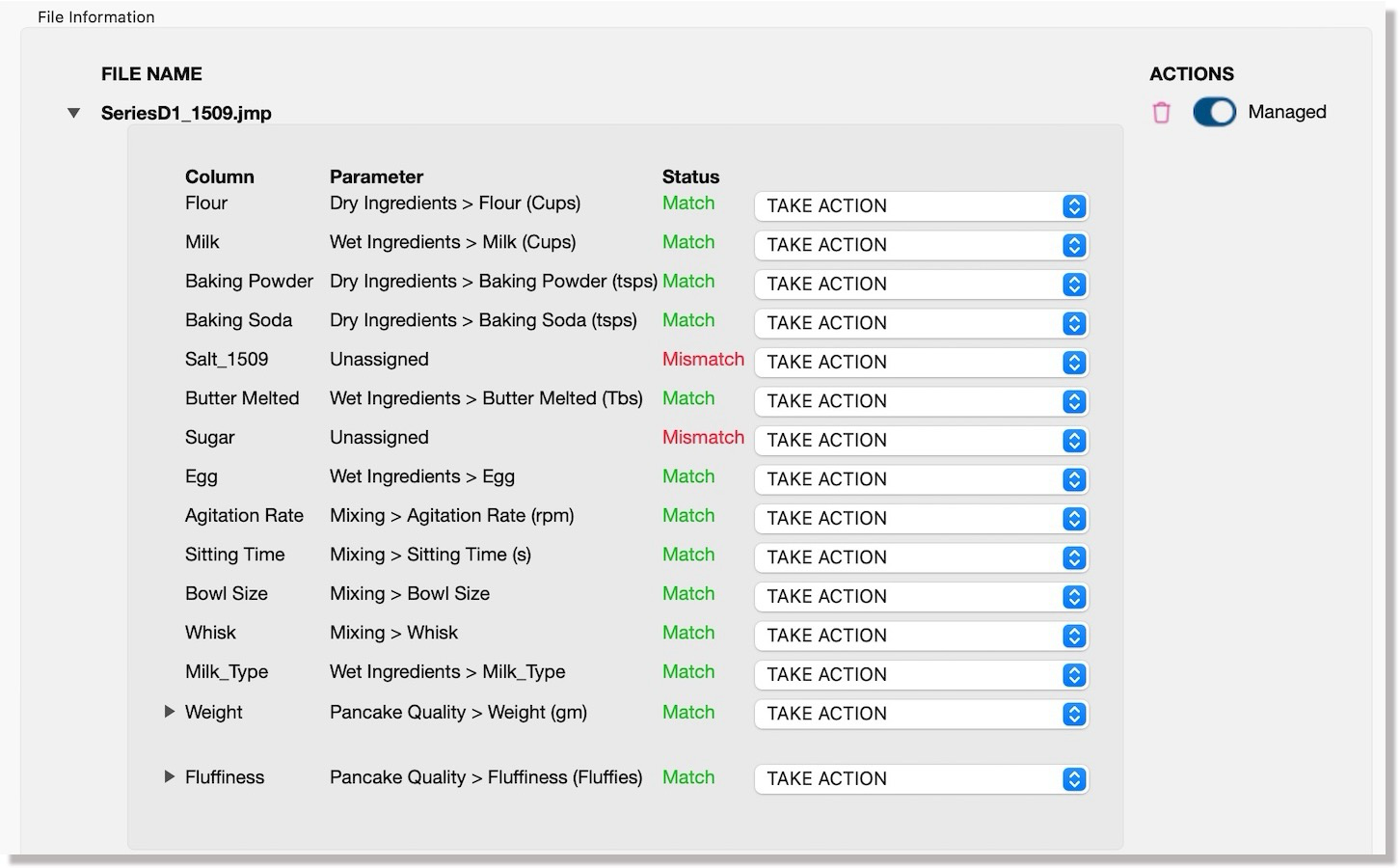
-
If you want to select additional files, repeat steps 2 and 3 until you have selected all of the files that you want to be included in the upload.
Note
If you need to remove any of the files from being selected for an upload, click or tap the remove icon to the right of the corresponding file name.
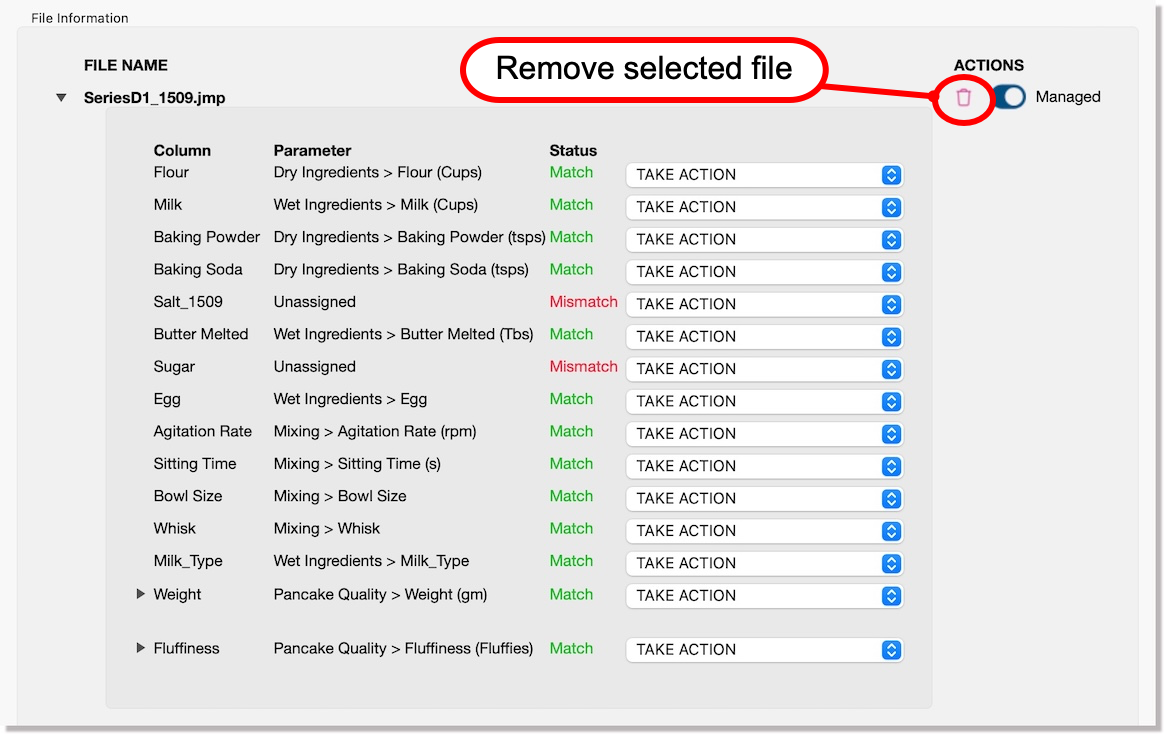
Assign tags to selected files and models for upload¶
If you want to assign one or more tags to the selected files for upload, select existing tags or create and select new tags using the Apply Tags to Record panel box.

To assign one or more tags to the selected files in the upload dialog:
-
In the Tag Type field, select an existing tag type.
Note: If you want to create a new tag type:
-
Click the Create New Tag Type option in the Tag Type field.
The Tag Type dialog appears.
-
In the Tag Type Name field, type a unique name for the new tag type.
-
Optional: In the Tag Name field, type one or more unique tag names, using a comma to separate multiple names.
-
Click OK.
The add-in will use the selected tag type name to filter the existing tag nmmes in the Tag Name field.
-
-
In the Tag Name field, select a tag name and click the Add button.
Notes:
-
If you want to select multiple tag names at a time, hold down the Shift key and click to select multiple tag names before clicking the Add button.
-
To remove a selected tag name from the Selected Tag Names panel box, highlight it in the list, and click Remove.
-
To remove all of the selected tag names from the Selected Tag Names panel box in one action, click the Remove All button.
-
-
If you want to assign the same set of selected tags to selected models for the upload, click the Copy to Models button.
Assign a journal card to the selected files and models for upload¶
If you want to assign a journal card containing comments about the selected files for the upload, type your comments in the Capture notes about this record on Journal Card field.
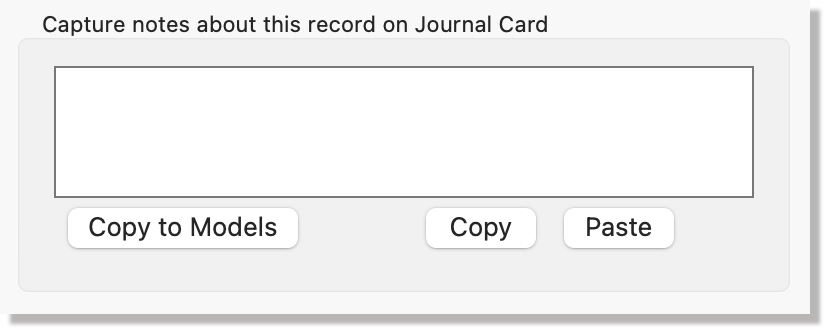
Resolve mismatched parameters in selected files¶
After you have selected files for your upload, the add-in validates the parameter names in your files against the parameters defined using the selected template, if you have defined one. If you have not selected a template, the add-in validates parameter names again existing parameters in the database.
Choose how you want to resolve mismatched parameter names if the JMP add-in discovers invalid parameter names. The status of Mismatch is displayed beside mismatched parameter names.
All parameter names need to be resolved to a status of Match before the add-in will allow an upload to be successfully completed.
Choosing an action to resolve mismatched parameter names¶
For each mismatched parameter name in the selected files for an upload, choose one of the following options in the Take Action drop-down field for how you want the system to resolve it:
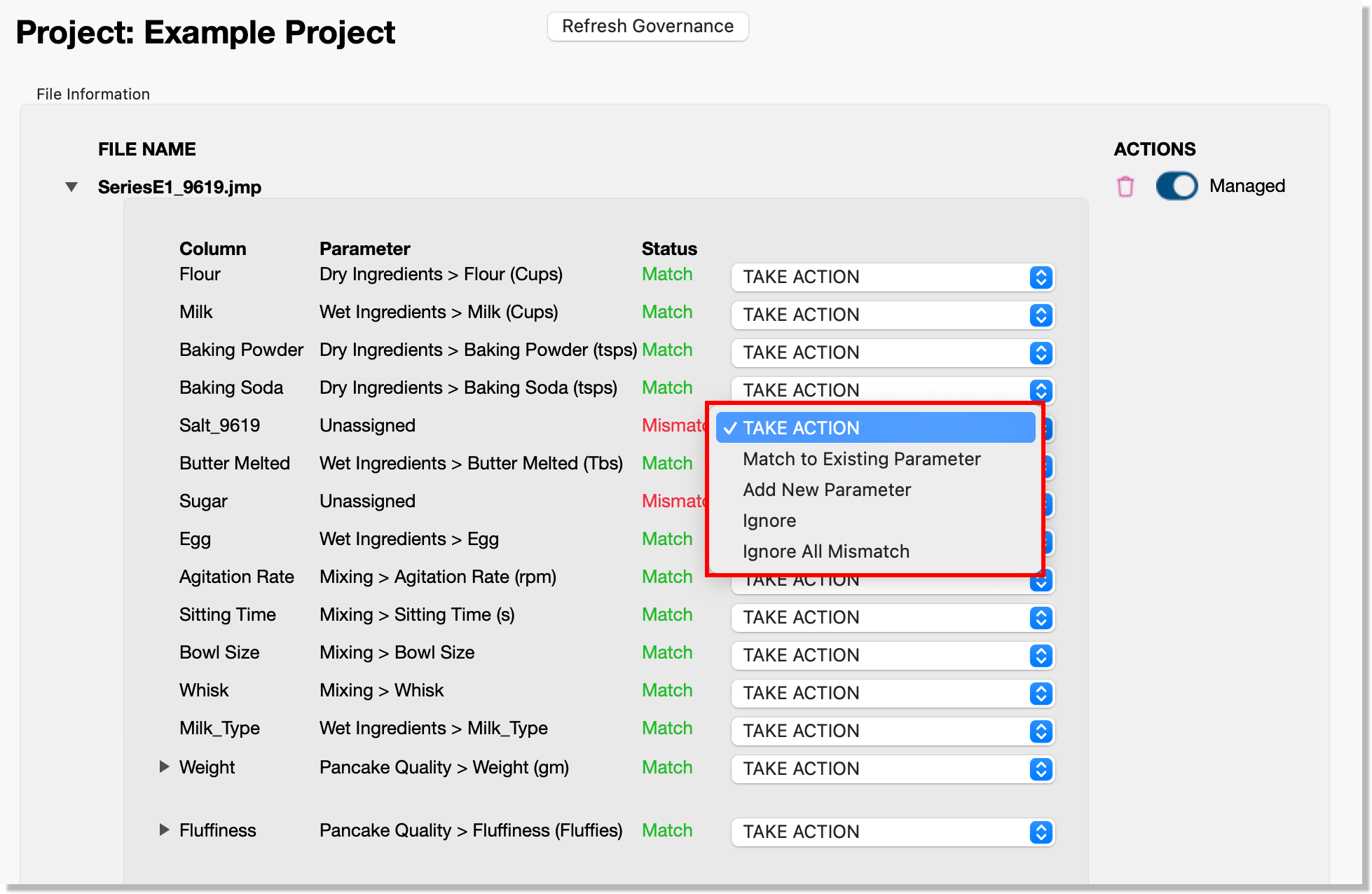
-
Match to existing parameter - updates the mismatched parameter name to match an existing parameter name in the template or database:
-
Add new parameter - your parameter name will be created as a new parameter in the database and will be assigned automatically to the node template as part of the upload process.
-
Ignore - the add-in will ignore the parameter name and leave it as is in the original version of the given data table. The ignored parameter name will not inherit relationships with or metadata from other data objects in the same data table. However, it is traceable as an original parameter column in the original version of the given data table. The value in the Status column for this parameter name will be updated to "Ignore."
-
Ignore all mismatch - selecting this option will update all mismatched parameters in the same data table to a value of "Ignore" in the Status column. The other resolve behavior described above for the Ignore option for a single parameter name also applies to all of the mismatched parameters in the same data table.
When you have resolved mismatched parameters so that all of the parameters in the files have the status Match, the files are ready for you to complete the upload.
Prepare models for upload¶
If any of your selected files include models to be uploaded, each model is displayed in an accordion panel containing a summary of model details.

When you click or tap the expand icon (right arrow head) to the left of a model name, the panel box is expanded to display options for how you want the add-in to handle the given model.
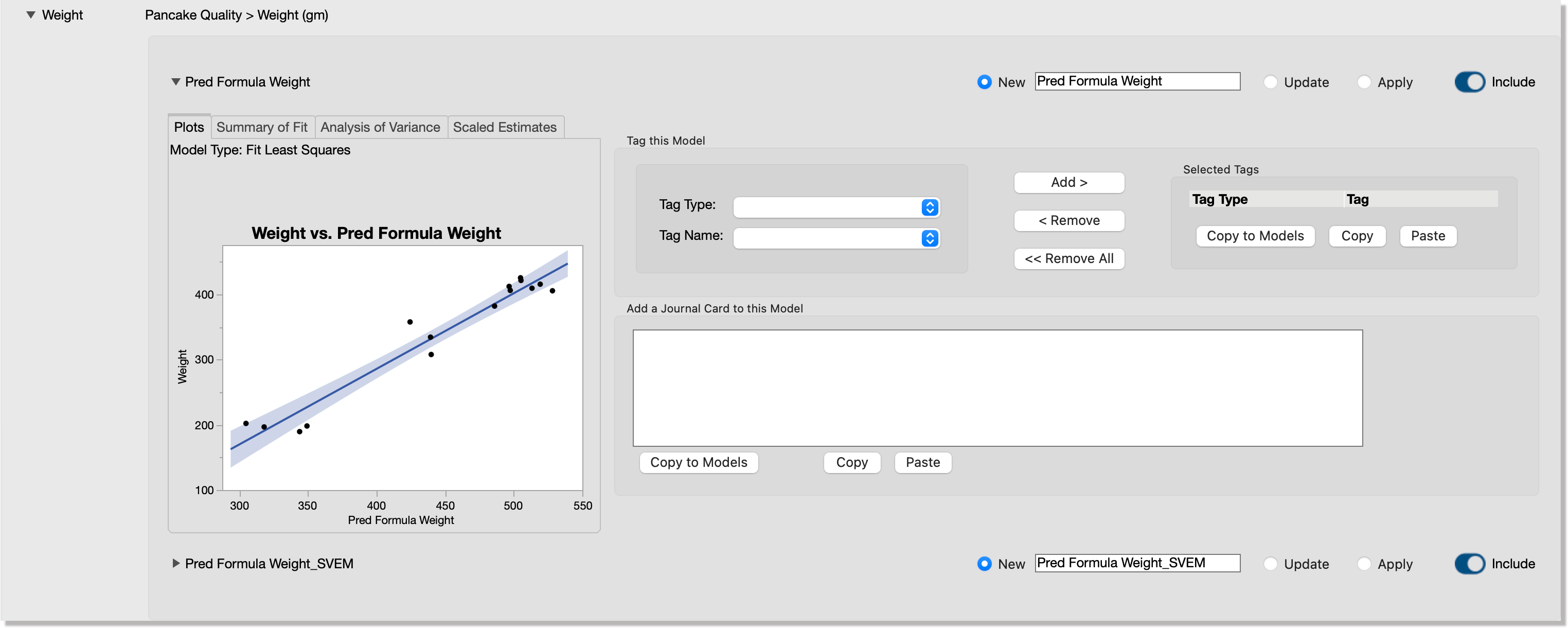
-
New - the given model is considered new and is assigned a model ID and an initial version number of 1.
-
Update - the add-in looks for the same model name in the database, upversions the model version number, and designates this version as the latest version of the model.
-
Apply - the add-in applies the given model to the current data set
-
Include toggle button - by default, this feature is turned on so that the given model is included in an upload and is version controlled. If you turn it off, the model is excluded from an upload and from being version controlled.
The panel box for a model also displays tabs of the following summary information:
-
The Plots tab displays a "parameter vs model" plot to visualize how close a fit the data values are to the model.
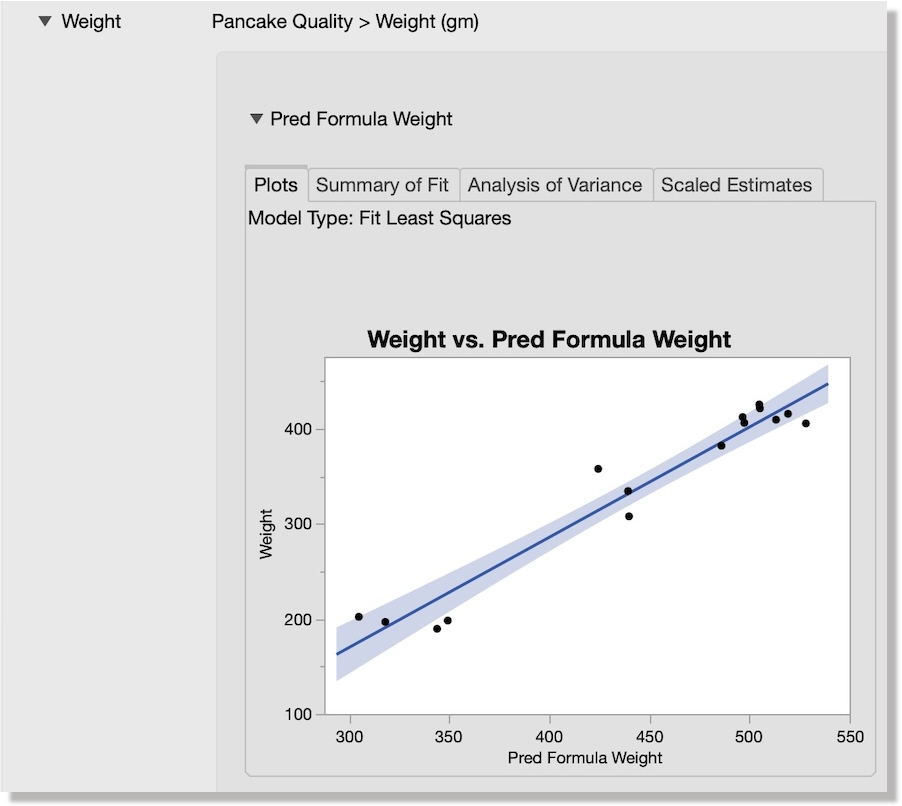
-
The Summary of Fit tab displays a summary table of the R-squared adjusted value, the Root Mean Square Error value, and the Mean of Response value.
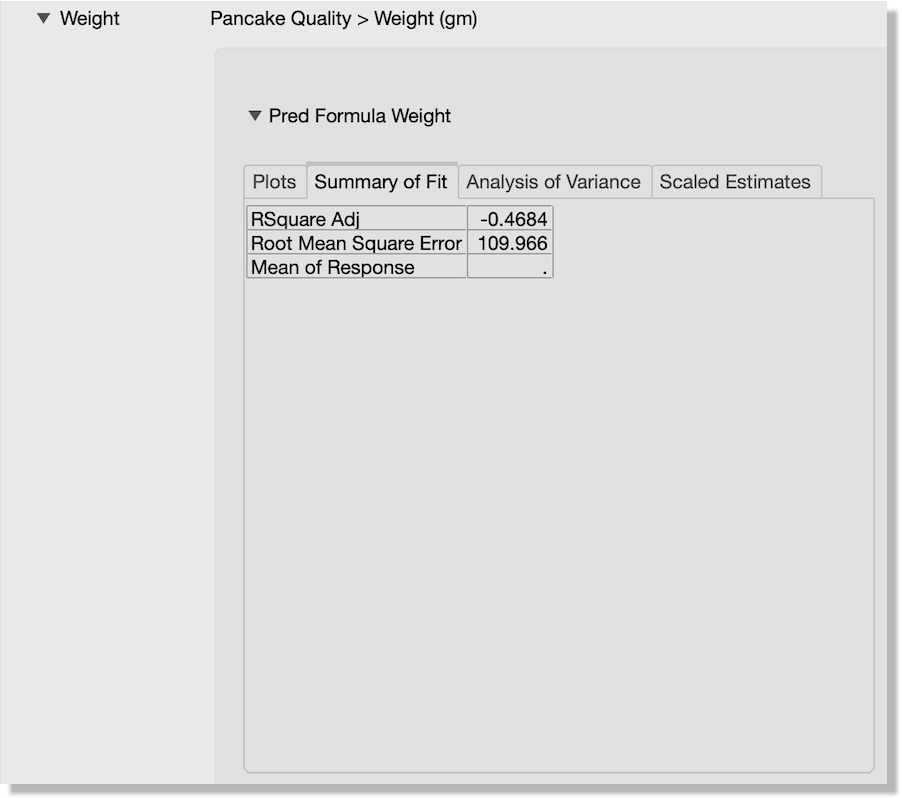
You can also assign one or more tags and/or a journal specifically to a model by using the corresponding panel boxes for the model.

Version control for selected data tables¶
When you select a data table to be uploaded, it is displayed with the Managed toggle button turned on by default in the File Information panel box.
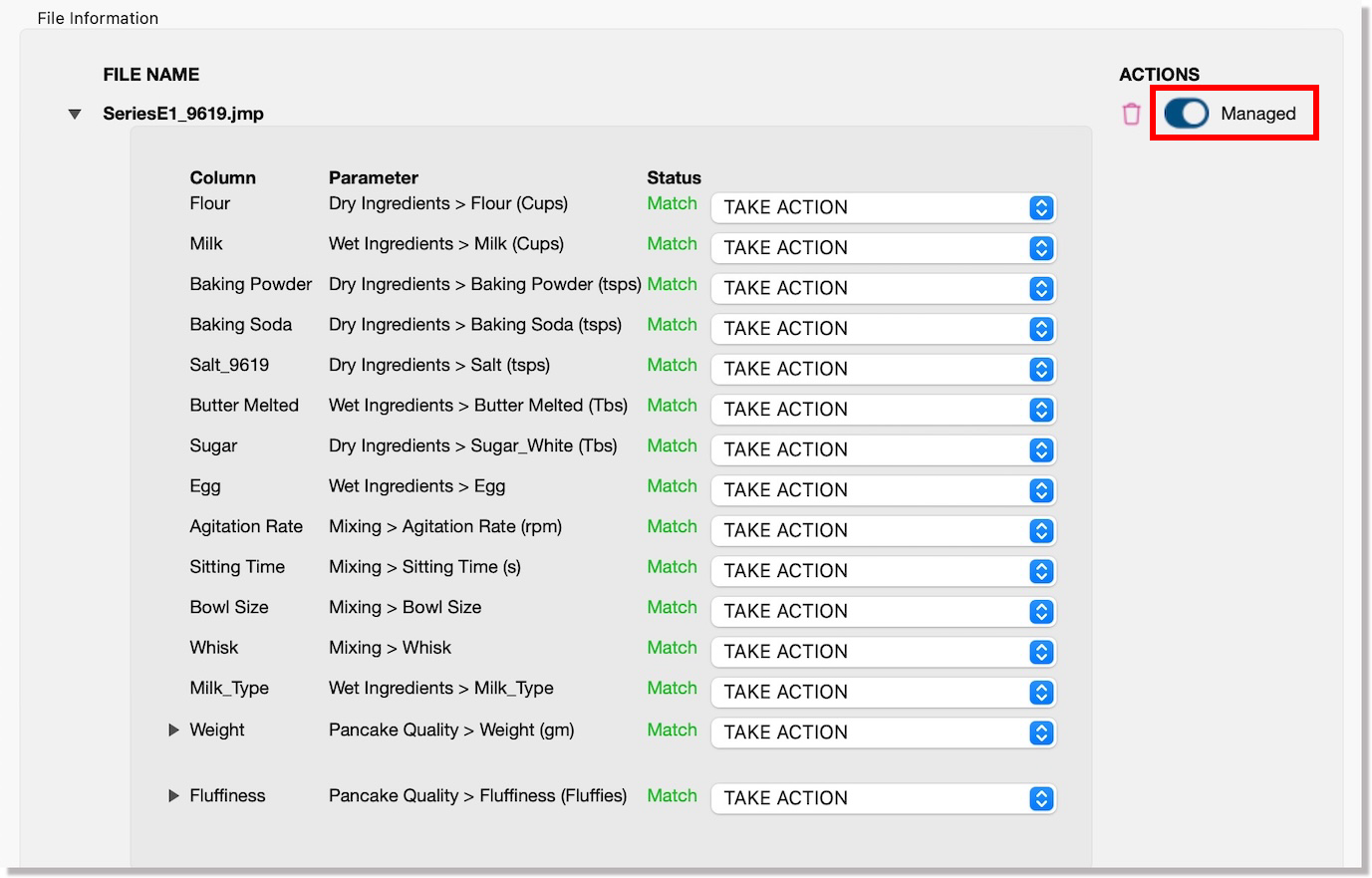
When the Managed toggle button is turned on for a data table, the add-in will version control a given data table, where it preserves the original data table and maintains subsequent versions of the data table as modifications are made. Each modified version of a data table is saved in the database with a status of Reconstructed, which is indicated if it is returned in a set of search results in the Search view.
When the Managed toggle button is turned off to indicate the Supplementary status for a given data table, the add-in specifies it as a supplementary file, which means the data table will not be version controlled. Only the original version of the supplementary data table will be maintained in the database.
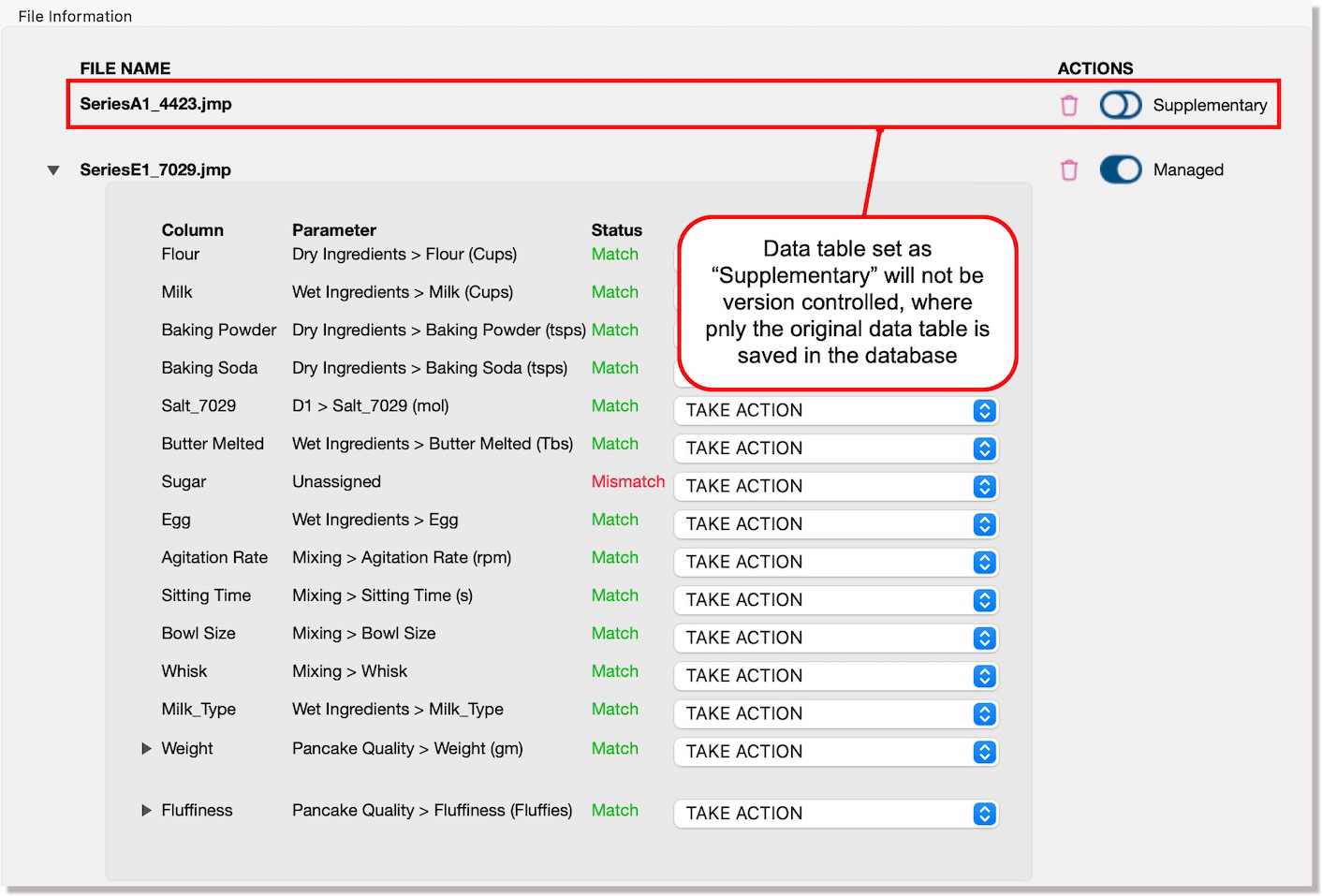
Complete an upload of files¶
The third task in the upload workflow is to complete an upload once your selected files have been validated by the application.
When your parameters have been validated with a status of Match, click or tap the Save button to complete the upload of files to the database.

A confirmation message is displayed once your files have been uploaded successfully to the database.